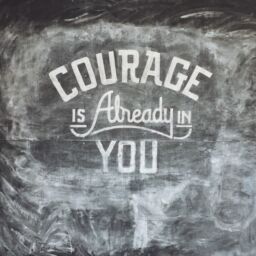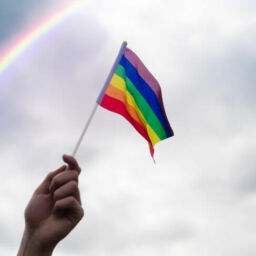
Discriminatory Abuse
by- Kimberly Clayton
One of the most important protections the federal government provides for society is freedom from Discriminatory Abuse. Unfortunately, regulations and protections still need growth and comprehensive changes, especially for the protected classes of race, color, and sex. In 2020, the killing of George Floyd by police officer Derek Chauvin rekindled the Black Lives Matter (BLM) movement that begun in 2013 after the acquittal of Geoge Zimmerman for the murder of Trayvon Martin (History.com Editors, 2021; Howard University, n.d.). The world witnessed the cruel injustice the police department inflicted on an individual within a Protected Class. This tragedy is evidence that Discriminatory Abuse is prominent in our society today, and we need to educate and support these communities to eventually eliminate this form of abuse.
Subconsciously, we all have experienced and practiced Discriminatory Abuse. Through a subconscious incident, the Victim most likely experiences hidden discrimination, a form of indirect discrimination (Pereira & Paoloni, 2019). Hidden discrimination is “behavior that may not be intentionally discriminatory or not perceived as such by the individuals doing the discriminating, while it may be perceived as offensive by the person being discriminated against. It can be subtle and/or covert, and it is usually more structural than personal” (Pereira & Paoloni, 2019). This type of Discriminatory Abuse is rarely talked about and often overlooked. One example is when a company hires an applicant based on demographics despite the applicant being less qualified. Industrial and Organizational Psychology published a study in 2017 that asked women to recall discriminatory incidents they had experienced or witnessed in the workplace (Jones et al., 2017). The study shows that the discriminatory incidents that the participates experienced or witnessed were 33% subtle and interpersonal, 28% covert and interpersonal, 23% overt and formal, and 16% subtle and formal (Jones et al., 2017).
Discriminatory Abuse targets race, gender, sexuality, disability, or other protected characteristics of the Equality Act. According to Ann Craft Trust, the four most common forms of Discriminatory Abuse are:
- Direct Discrimination- Treating someone with a protected characteristic less favourably than others.
- Indirect Discrimination- Putting rules or arrangements in place that apply to everyone, but that put someone with a protected characteristic at an unfair disadvantage.
- Harassment Discrimination- Unwanted behaviour linked to a protected characteristic that violates someone’s dignity or creates a hostile environment for them.
- Victimization- Treating someone unfairly because they’ve complained about discrimination or harassment. (Davies, 2019)
Being a target of discrimination greatly affects mental health. If not treated, Discriminatory Abuse can cause extreme levels of stress and unhappiness. As a result, this can seriously impact someone’s social life and family relationships. For example, a parent who is affected by this type of abuse could have little success in interacting with their child to promote the child’s growth and development. It can also disrupt planning and decision making, which can impact a successful future (Gordon, 2016).
Vickie Mays, a professor at UCLA, asserts, “When we’ve had these experiences and anticipate that other incidents might lead us to be discriminated against, it can interfere with our ability to cognitively function at our best” (Gordon, 2016). How do we live a productive and informed life of peace and equality in a society that does not always respect equality? But knowing there is still more work that needs to be done, we must still strive to live our best lives while educating and uplifting others.
With ARO, you can find a solution and a plan to live a life of equality, healing, and escape from abuse. Norm Therapy® offers coping mechanisms that you will need to identify your abusive circumstances, strengths, and weaknesses, and provide cursory solutions that could extract you from your abuse.
We at ARO are here to support you in your personal healing journey to complete well-being. We bring awareness and education to 13 different types of abuse including Narcissistic, Sexual, Physical, Psychological, Financial, Child, Self, Cyberbullying, Bullying, Spousal, Elderly, Isolation, and Workplace, and help others heal and find peace. Please support our efforts by going to GoARO.org to learn how you can make an impact on the Abuse Care Community.
References
Davies, E. (2019, July 11). What is discriminatory abuse? Ann Craft Trust. http://www.anncrafttrust.org/what-is-discriminatory-abuse/#:%7E:text=Discrimination%20is%20abuse%20that%20focuses
Gordon, D. (2016, January 13). Discrimination can be harmful to your mental health. UCLA Newsroom. https://newsroom.ucla.edu/stories/discrimination-can-be-harmful-to-your-mental-health
History.com Editors. (2021, June 25). George Floyd is killed by a police officer, igniting historic protests. HISTORY. http://www.history.com/this-day-in-history/george-floyd-killed-by-police-officer
Howard University. (n.d.) Black Lives Matter Movement. library.law.howard.edu/civilrightshistory/blm
Jones, K. P., Arena, D. F., Nittrouer, C. L., Alonso, N. M., & Lindsey, A. P. (2017). Subtle discrimination in the workplace: A vicious cycle. Industrial and Organizational Psychology, 10(1): 51-76. http://doi.com/10.1017/iop.2016.91
Pereira, E. T. & Paoloni, P. (2021). Handbook of research on women in management and the global labor market. IGI Global.
















